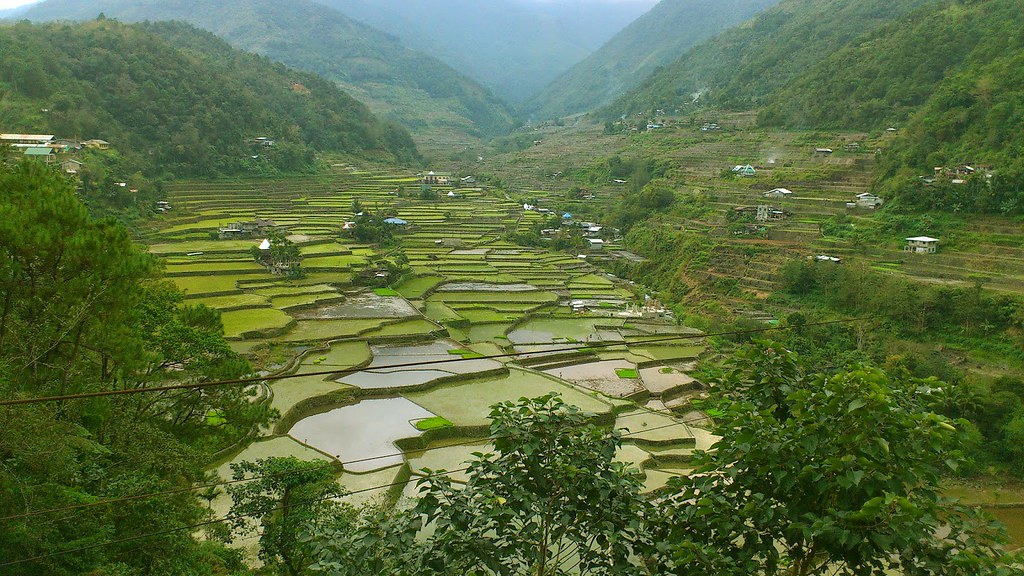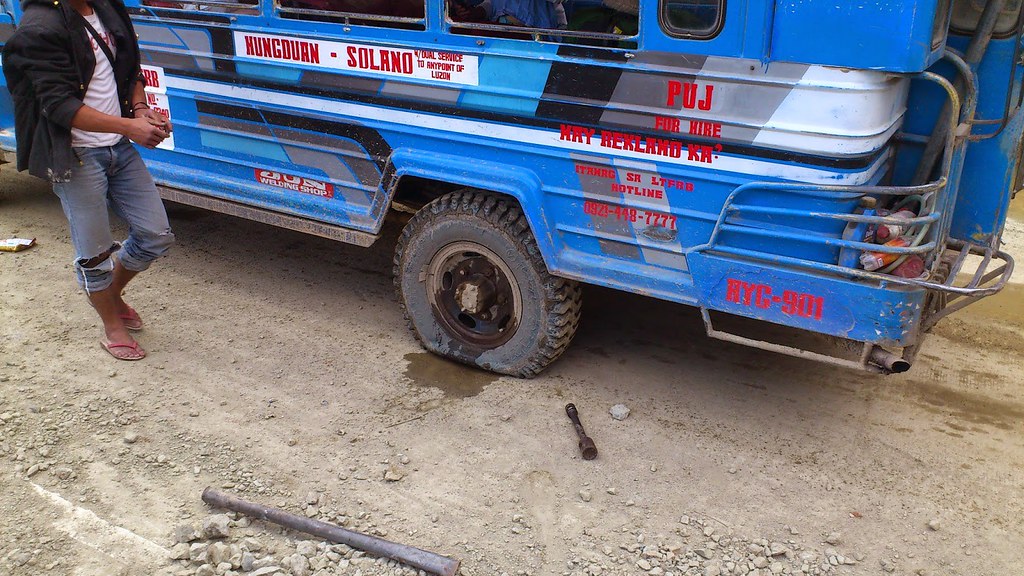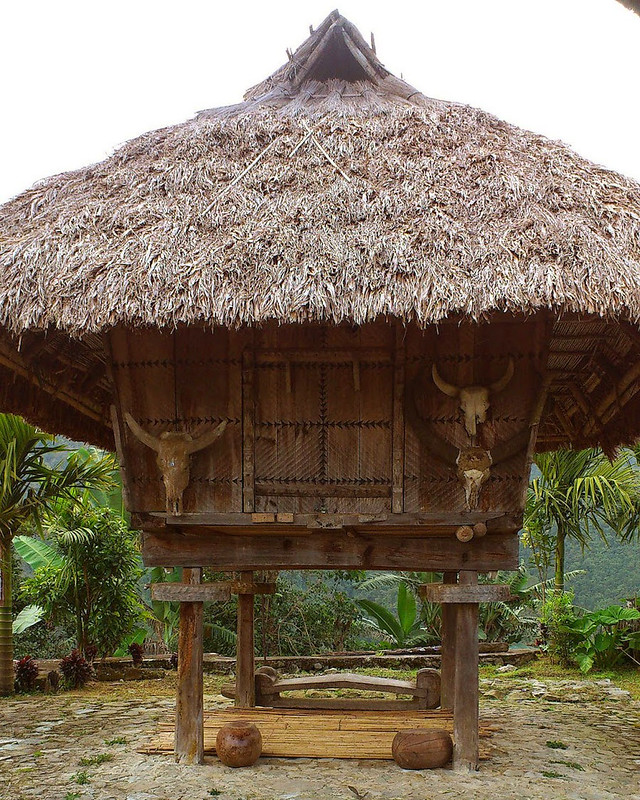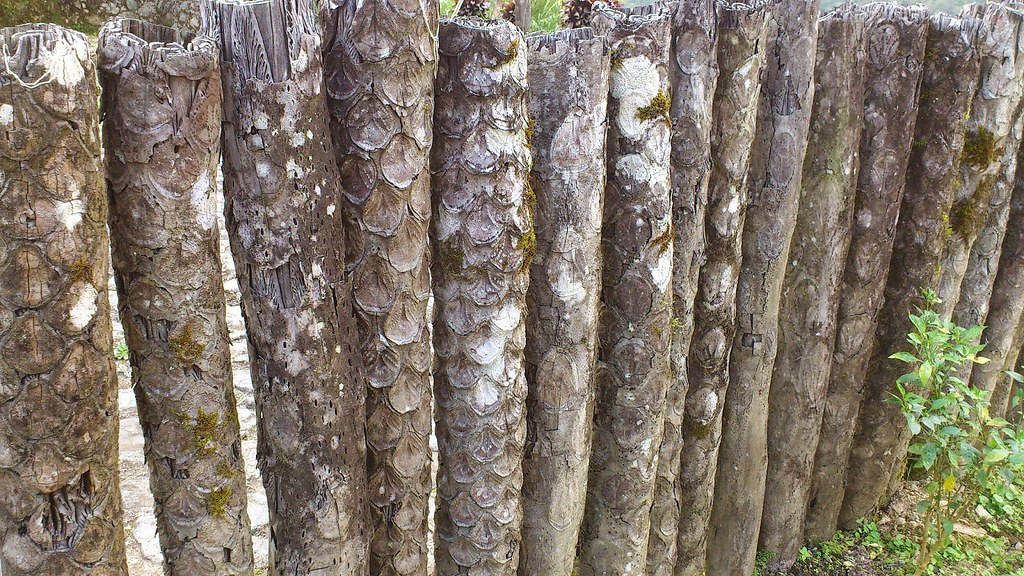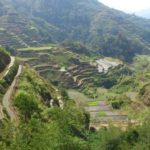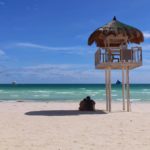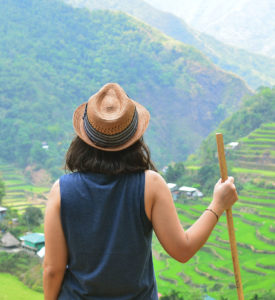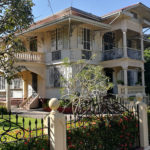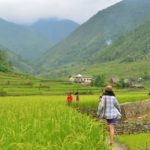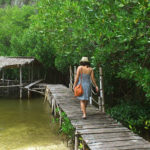After our viewpoint tours in Banaue, part of our itinerary is to visit Hungduan for one of the oldest terraces in Luzon: Hapao. The Hapao rice terraces cluster is found in Hungduan, pronounced as Hung-dew-an.
Getting there
We need to catch the only jeepney trip to the place that goes there at 12 noon. The PUJ ride from the Banaue Trade Center (BTC) to Hungduan is ₱30.00 which is supposed to take an hour or two. The road will be dusty and bumpy, luckily I brought my Headware.
Our hour trip turned to three hours–Kareen and I have this running joke about us traveling headfirst, thinking we know the place enough to navigate but still end up unpleasantly surprised when we encountered things we didn’t expect. A good example is our Hungduan trip. It’s part of the whole adventure package, so no regrets.
As our jeep made their delivery of cases of Red Horse, sacks of cement, styrofoam boxes of meat and fish, steel bars, and other household essentials to their designated recipients. It took us a while to realize that the jeep also acts as a delivery service to the locals.
The locals are big on trust here since they rely on the jeep to deliver their ordered goods from the BTC. To complete our unsolicited adventure, our reliable mode of transportation had a flat tire right in the middle of the rough road. Thankfully, the locals are quick to fix it. One of the passengers assured us that this is something normal while on the road.
Kareen and I were disappointed that Hungduan doesn’t have the terraces we were looking forward to. The Hapao terraces cluster is located in (of course) Hapao, 45 minutes away from Hungduan. Not up in the mountains (where Hungdian is located) but on the lowlands to which we already passed.
Dread sank in our grumbling stomachs, realizing our mistake. We know we made a wrong turn when we saw that our accommodations sat high up the mountain top shrouded with clouds or fog. Piso na lang padong sa langit, (one peso to heaven) as Kareen aptly said.
Where we semi-crashed
We chose Happy Homes since Tita Sabel is quite a household name and her son is one of the town’s councilors. It costs us ₱200.00 per person per night with a common toilet and bath, an in-house sari-sari store on the first floor and they can whip up food in a few minutes for you.
However, it is very far from the terraces we wanted to see. Plus! We have a logistics problem. There is an 80% chance we might not make it back to Banaue. So we switched accommodations in the end. I’ll explain more later.
Hungduan
We met Rowena Nakeke Sicat of Hungduan’s tourism office who graciously gave us a brief tour. She shared there is not much to see in Hungduan. There used to be the spider terraces but was long destroyed and forgotten. Instead, she showed us their heritage village where ten Ifugao native huts stood proudly and the weaving center, all the while explaining Ifugao customs and traditions.
Animal skulls can be seen outside the huts signifies that the one who lives there practices a ritual. It also means prestige in the Ifugao culture. It is prohibited to display animal skulls if one is not practicing the rituals.
Rowena also introduced us to two councilors who entertained us with stories and shared their tourism dilemma. It turns out that they are not getting their share of tourists from Banaue. Tour packages are supposed to include visiting Hungduan but eager tour guides lead tourists to Sagada or Batad where they usually go. Aside from the terraces, there are the rituals to witness on certain months, a good reason to visit and experience the local culture.
Hungduan’s Punnuk
Rowena mentioned that the best time to visit Hungduan is during summer to witness Tungoh Festival, an annual community activity commemorating the rest period after the planting season. It is celebrated at the municipal ground every from the 17th-19th of April. Contests in native dance, songs and ensemble are few of the local highlights as well as display and sale of local products like woodcarvings, handwoven products, and local organic farm produce.
Then there’s the “Punnuk,” a thanksgiving ritual after a bountiful rice harvest performed by residents of Hapao, Baang, and Nungulunan in Hungduan during the first week of August. Rowena shared an article about Punnuk. This is how the ritual goes:
A day before the ritual, the native priest or “mumbaki” performs the thanksgiving rite called, “houwah“. The mumbaki also reads the bile of a chicken for good omen and the offering of “bayah” (rice wine) to the gods and deities.
A female agricultural leader called, “dumupag,” declares the start of the Punnuk celebration on the following day. It signals that the people are now free to do other things that they were prohibited during the harvest ritual such as no eating of fish or shells from the river.
The celebration was last performed in 1986, thanks to Kidlat Tahimik, the celebration of Punnuk was revived in 1997. This is also the best time to witness the locals in their full Igorot regalia. Men will wear bahag or “wanoh” (loincloth) with their “pongot” (headdress) while women will be in their “tolge” (native skirt). They carry the “dongla,” the principal sacred plant of Ifugao, and the “kina’ag” (a monkey-like scarecrow made of rice stalks) in a procession heading to the nearby river. A tug-of-war called “guyyudan” will commence amongst locals. A long wooden pole with a hook, called “pakid”, is pulled by each group from the opposite end. At the end of the game, villagers will throw the kina’ag and then the dongla into the river to symbolize that all misfortunes, illness, and pests will be washed away. It is believed that winners would have an abundance supply of rice while losers experience scarcity.
Hapao Rice Terraces
Rowena also took us to the Hapao viewpoint. The Hapao cluster of terraces is sprawling flat rice muddy-green paddies. The stone-walled terraces stretch way back in 650 AD. It is simply beautiful. I love how the terraces cascaded like a stack of plates doing a domino effect. It is artfully arranged to distinguish itself from those in Banaue.
According to Rowena, the fat wires caught in the photo used to transport cement, goods and other materials from the main road to the residents in the terraces.
Hapao hospitality
Tita Sabel’s nephew explained that the only way back (read: ONLY) is the 4 am jeep that leaves from the junction road which is 10-20 minutes far from Happy Homes. And sometimes, jeep is not always available. The junction can be reached by walking downhill in the dark since there is no tricycle on sight. There is a big chance we might not make it back to Banaue at this rate and we can’t afford to waste time. So we made a snap decision to go back to Hapao with Rowena instead of staying in Happy Homes. Kudos for Rowena for putting up with our impulsiveness and arranging last-minute accommodations with the Hungduan Mayor.
We caught the Mayor before he heads home. He was such a refreshing sight! Slippers, jeans, and no bodyguards. He even helped me carry one of my bags! Walking in the middle of the terraces and staying in the middle of one is included in my travel missions in Banaue. I was disappointed at first because we were not able to book a homestay in the middle of terraces but it was destiny to meet Rowena, who introduced to the Mayor, who happens to own a homestay in the middle of the terraces.
The Mayor’s wife cooked something for us. We shared dinner with a few enthusiastic tourists. Fresh veggies, fish and steaming red rice were served and they are delicious. Or maybe we were just hungry. The tourists shared they’ve been to Bogyah Hot Springs which explained the flushed faces grinning back at us. They explained to us how they endured a long trek before they were able to relax at the hot spring.
One of them made a comment that Cebuanos, Bisaya in general, are brave people. I guess we are. We were brave and stupid enough to go to Hungduan. We don’t know anybody but heavily relied on people’s generous hospitality.
A test of bravery
Our bravery was tested at the break of dawn. Our mission is to catch the 4 am jeep that will pass by the highway the following morning.
At three-ish in the morning, we prepped for the journey. We crossed the terraces in the dark armed with our cellphones and a small flashlight to guide us in the dark. As the Mayor puts it, just follow the cemented paved way. We gingerly crossed the terraces in single file, under the stars, in the open field of terraces all the while balancing our bags on our shoulders. One wrong step and we can fall to the side which is already planted with rice. Somebody will sacrifice us if we destroy their rice paddies. We don’t want that to happen, so we silently and slowly made our way to the main road.
Actually, I wasn’t so quiet about it because every now and then we need to catch our breath as we climb the steep stairs. We were cold, scared, and tired from the long trek we thought would never end. Our thighs and calves have never been given that kind of work out before.
We finally reached the main road about 5 am. A woman came out jogging, passed us and said there is usually a jeep that will pass by at 5 am. We are starting to reflect the wrong things we have done in our lifetime to deserve a bad situation–a bit too early for the Lenten season to be contemplating on our sins. I even made a silent promise to do something good just to let us get home safely.
After 30 minutes, a private van passed by which we looked longingly, then to our delight, made a stop few feet ahead and backed up. Just like in the movies. We thanked the Big Boss above and quickly gathered our things. We’re saved!
The van who gave us a lift made room for two. I got car sick en route because of the winding road. There’s a turn in every turn, not giving me a chance to recover from the dizzy spell. I took anti-motion sickness tablets but it didn’t kick in. I silently prayed that I can make it to Banaue without puking over the old people we have on board.
When we reached our destination in time for sunrise and I immediately collapsed on the sidewalk, almost kissing the pavement in gratitude. Good thing, I didn’t puke.
Because of the kind locals who gave us a lift from Hapao to Banaue, my faith in humanity is restored!
Bayanihan spirit is indeed very much alive in Banaue. And for that, I will never look at the Ifugaos the same way again, I have a better understanding of their world. Their hospitality and trusting nature is something I truly admire.
They are happy enough with the basic needs and most importantly, they don’t have a deadline to beat. Despite the bad experience on the logistics side and getting dizzy during the trip back, I still want to come back to witness their harvest ritual and when the terraces turn green.
(Almost) Getting lost in Hungduan is quite an experience for me. It gives me a chance to immerse in their culture, disconnect from city life and do some random self-reflections at the same time. It helps that the mobile signal is intermittent.
Happy Homes
Mobile No.: 0926-280-3213, 0915-252-3965
E-mail: [email protected]

